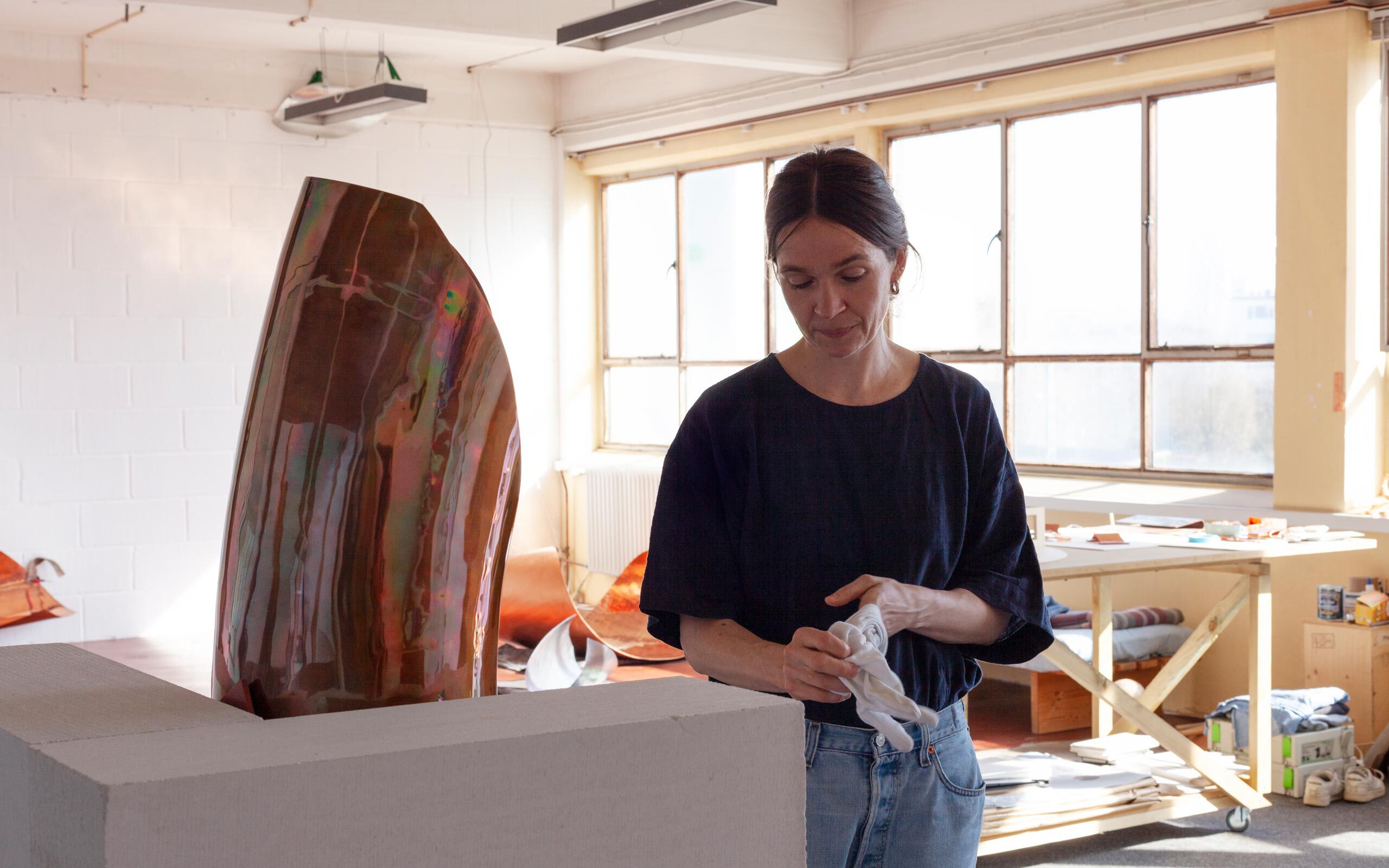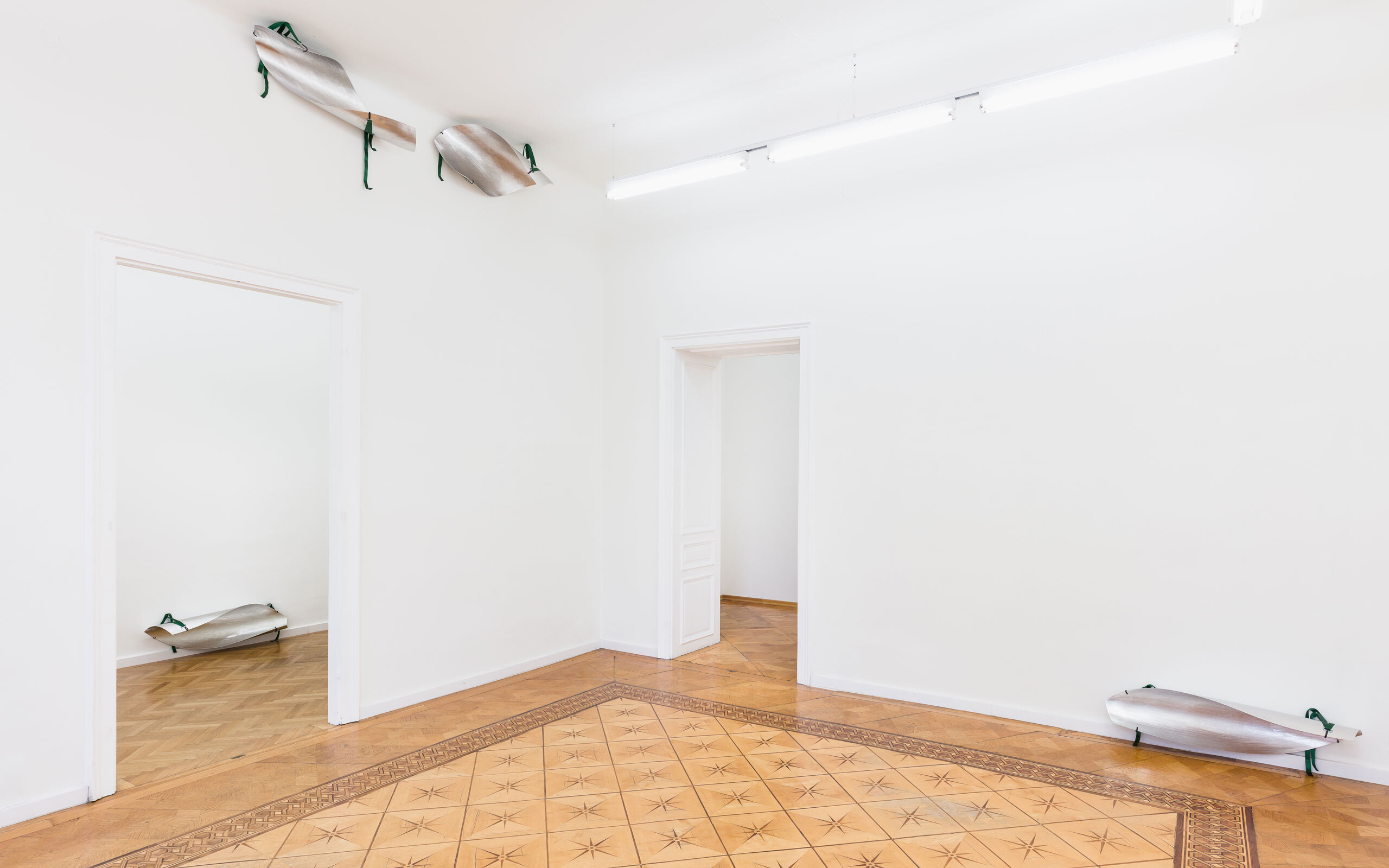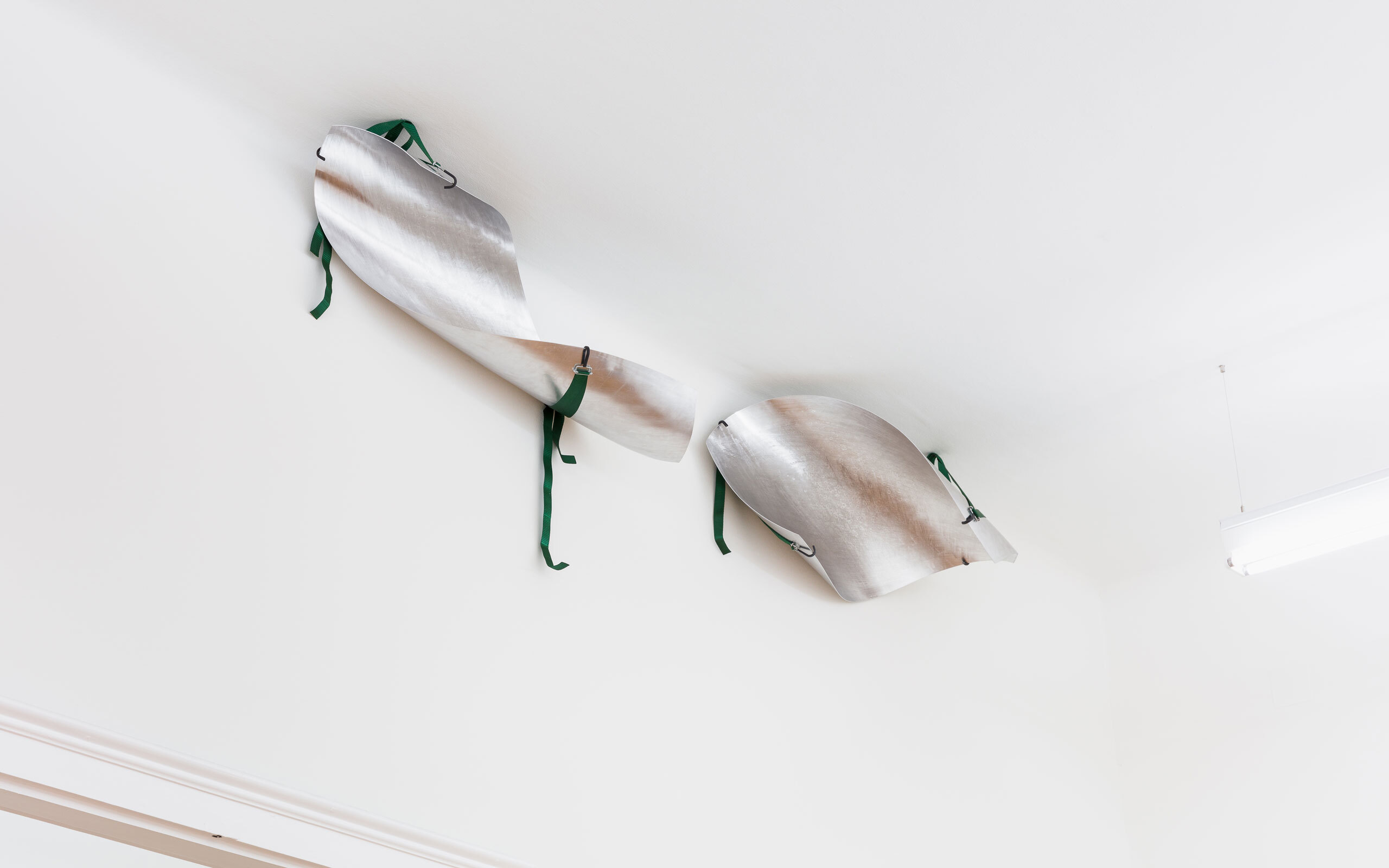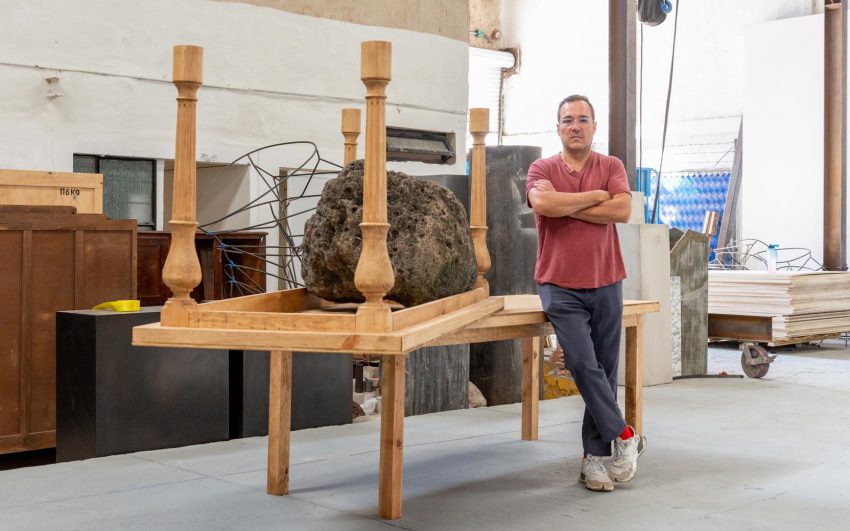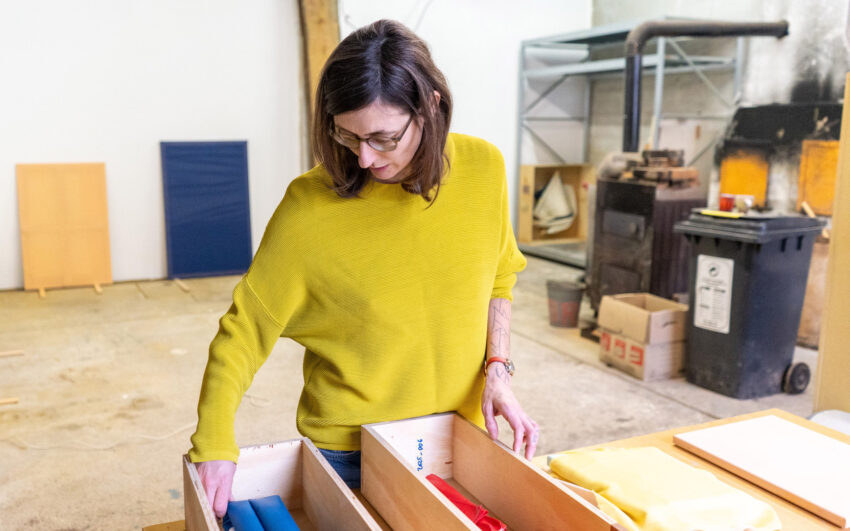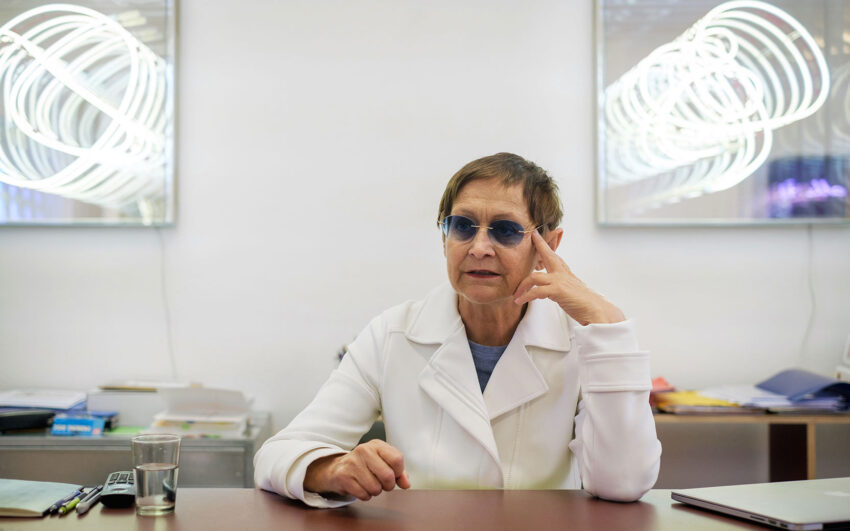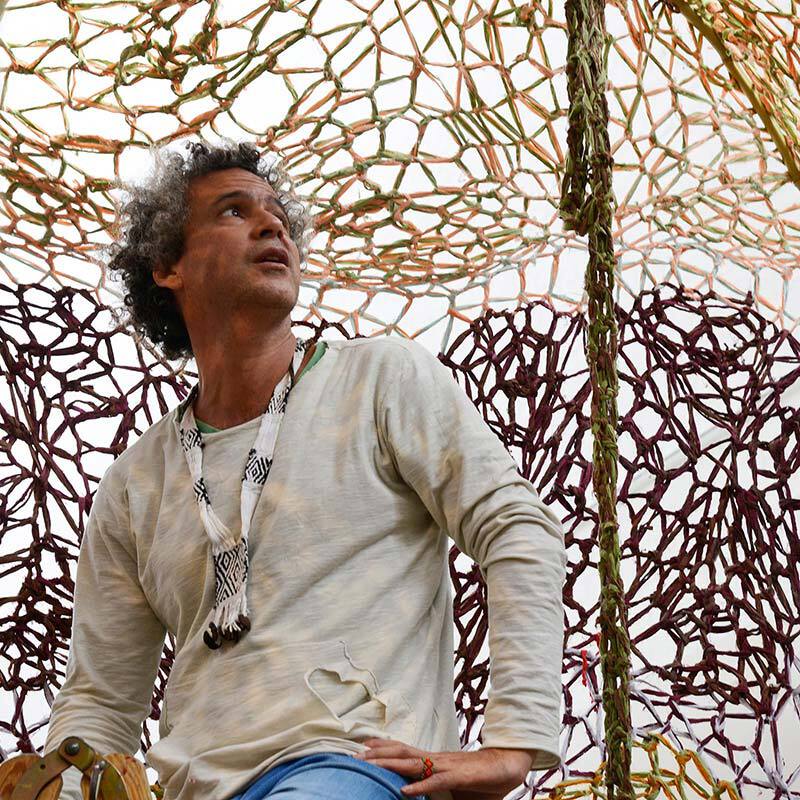The scene for contemporary art in Europe’s North is expanding and developing new dynamics as international collectors are watching the scene. With Nordic Notes we regularly cast the eye on the Nordic art and cultural scene, portraying its important actors.
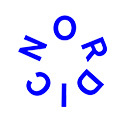
Danish artist Marie Lund pursues sculptural aspects in her work and engages in a complex approach to explore the medium of sculpture. She is interested in the transformation of materials and the shaping of forms. Bodies, everyday objects, and architectural elements are the starting points for her artistic research into the nature of surface and structure. Her sculptures are either in the centre or in the margins, but always part of the infrastructure for interaction.
Marie, you work with a range of different materials like aluminium, copper, concrete, plaster, and textiles, as well as found objects. How do you decide on these materials?
Lately, I’ve been working a lot with copper, and what attracts me is how it is both resistant and very malleable. When choosing a material, I consider its inherent qualities. It’s these qualities of the material – whether it is how it reacts to heat, how it reacts to pressure or how heavy it is –that are also often the starting point for the shaping process that follows.
Can you talk more about this shaping process? How much is preconditioned by the material itself and how much do you influence it by artistic will?
It is in the negotiation between the qualities of the material and the intention I apply that the shaping of the material happens. In the shaping of copper, for example, I explore its strength and flexibility more deeply by heating it up, hammering, stretching and compressing it. I’ve been working with something called an English Wheel, traditionally used to make vintage car parts. It’s a mechanical process, in which you tighten these two wheels that apply a lot of pressure when you roll the copper in between them. And through that repetitive movement combined with the pressure, it enables one to stretch and shape the copper. I do enjoy the physicality, as a direct encounter, and as a consequence of coming up with something, having to work the material, spending the time and investing myself in it.
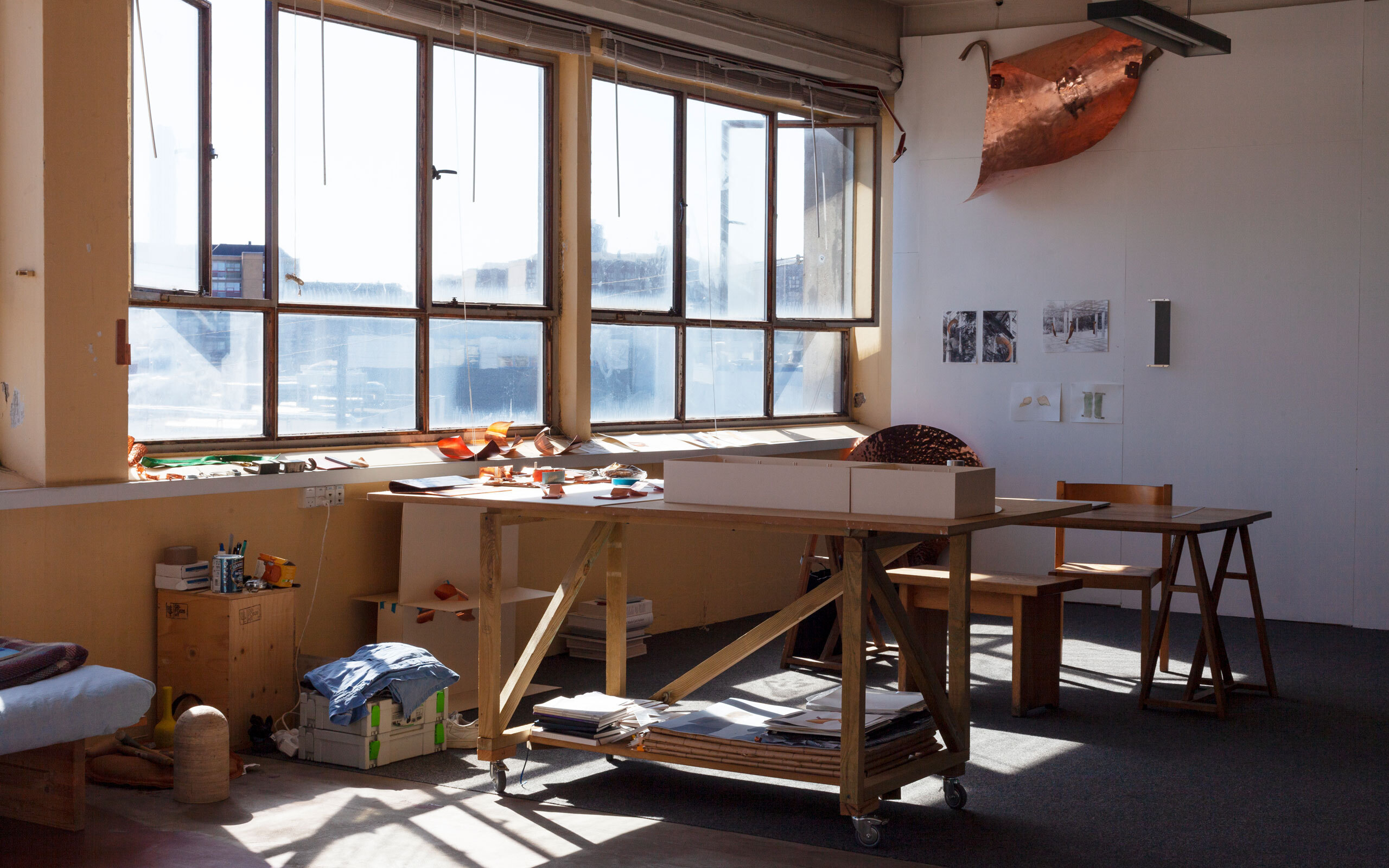
Which kind of shapes are you intrigued by?
A lot of the shapes arrive from existing objects that have some sort of intermediary position between the body and the space; objects that operate in a specific context with a specific function, like handles, railings, brackets, grips and switches. Often, I apply a certain level of abstraction by scaling them up and doing them in another material. Released from their function and the kind of obligations they would normally have of being productive or supporting, you are allowed to see them as pure shapes – while they still hold this kind of operational quality of something that can facilitate and enable.
What do you mean by that?
I’ve been thinking about something like a door handle being an anchor point, and a kind of conduit between intention and function, like an intermediary tool positioned between the hand and the door allowing the body to move into another room, as an occasion for activity and exchange. In a similar way, I think of the sculptures as some sort of articulated transitions between the body and the space. How we carry an embodied experience of scale and knowledge of how materials feel and behave and draw on those when we encounter things; how the materiality and the scale of objects and their position are measured through our body.
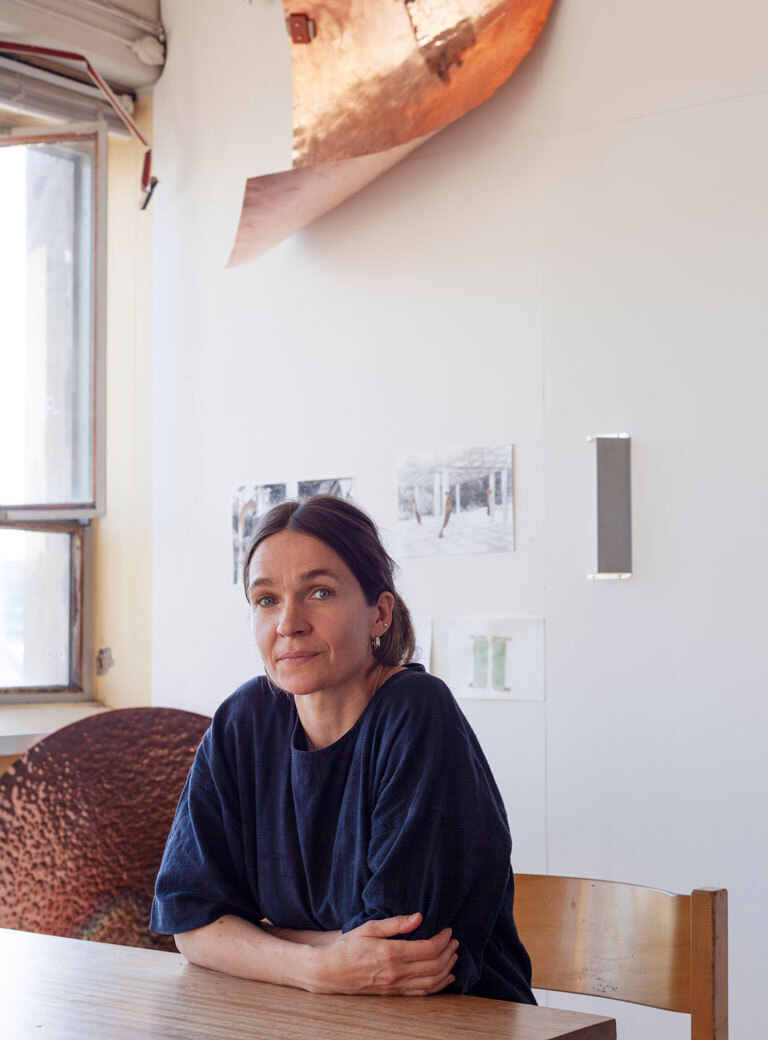
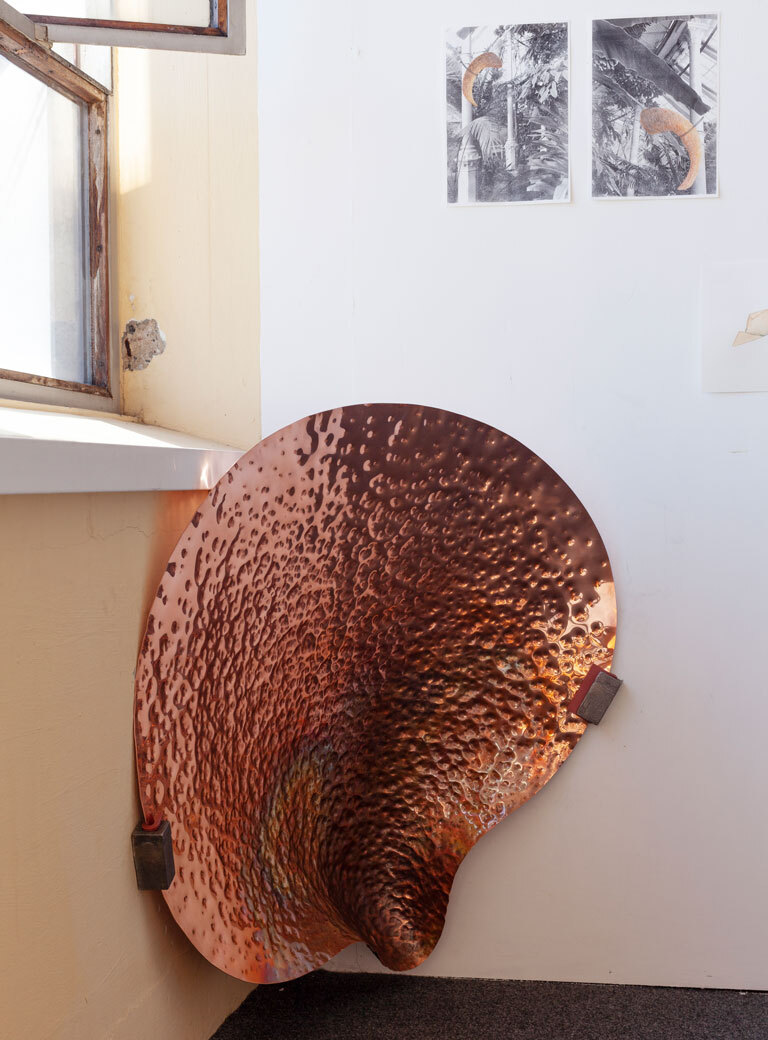
Lately, you seem to have pushed the sculptures towards the periphery of the space, placing them in the corners, and along the edges, as you did in your exhibition The Apartment at Croy Nielsen in Vienna, in 2020, in which you had aluminium works attached to the ceiling.
Yes, exactly. With such a placement, it feels like the object and the space accommodate each other. The corners hold the object, and the object activates and accentuates the space. The sculptures somehow frame the space and offer you a place to stay and a direction to move in.
The exhibition text at Croy Nielsen stated that they ‘avoid being at the centre of attention’. I find this to be fascinating for art that anyway is put on display.
I am interested in the relation between the roles of what is holding and what is being held and what is framing and what is being framed. Traditionally, it is the art space displaying the artworks. But I’m interested in dissolving these defined positions, and propose the sculptures as a way to exhibit the materiality and the sequence of the space. I’m interested in how placing the sculptures in the margins rather than in the centre can give space rather than take up space and provide an occasion for something to unfold.
How much does it matter to you where your works are displayed?
The space plays a significant role. In the exhibition at Croy Nielsen, the sculptures address the domestic scale and the decorative features of the space: the rounded stucco, the intricate floor, and the wooden panelling around the window and door openings. The sculptures mirror the scale of those architectural elements, mime both function and decoration, and inscribe themselves into the infrastructure of the space. They offer a kind of way-finding system; a place for the body to stand and stay, and a direction to move in. They’re not placed in the middle of the room or on a pedestal. They’re not autonomous and don’t speak as a singular voice. But they are integrated in the space and open to conversation.
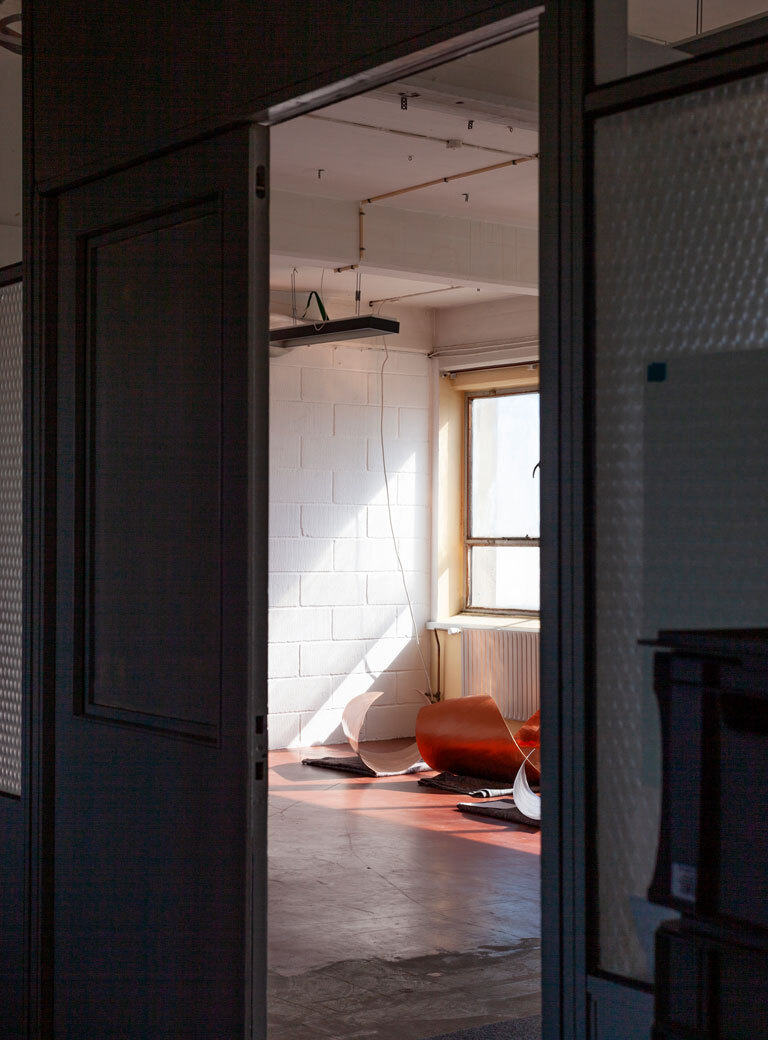
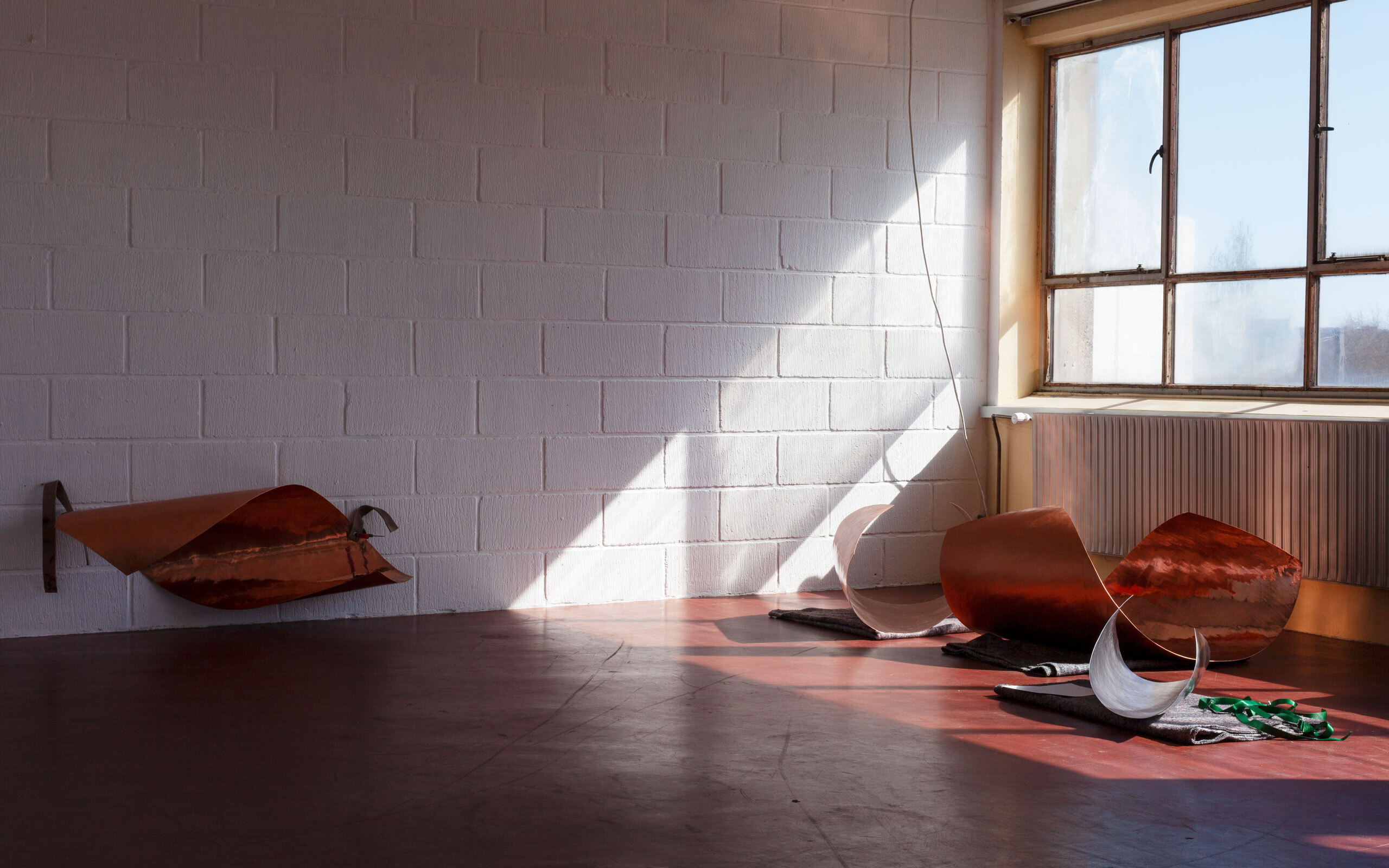
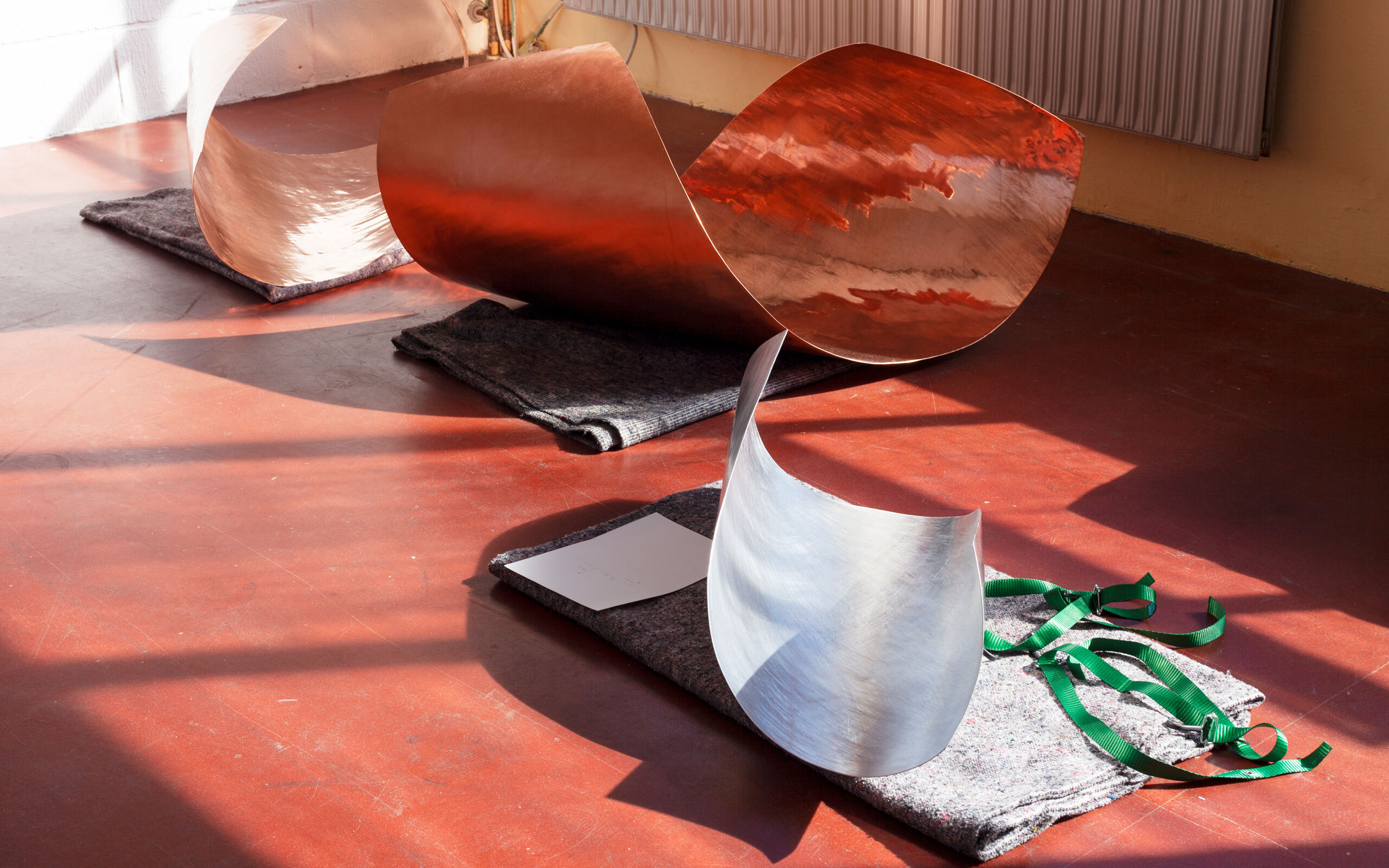
Can you talk more about the kind of dialogue you see building up between artworks and space?
I think a lot about how the sculptures are attached and how they meet their context, that being the space or the viewer or in some cases, other artworks. I’m trying to see how those different encounters can facilitate conversations and new inquiries. It is as if the sculptures raise certain questions to the space and the space asks questions back. In the same way, I might place a title onto the work that’s not narrative or descriptive in any way. The title can function as an inquiry rather than a description or statement.
Do you see evolution happening in your sculptures over time?
Increasingly, they are becoming more formal and, in a way, more mute. They don’t carry a specific concept or narrative, but instead an ability to let something resonate in and around them.
I would like them to be open to conversation with the space, the viewer, other artworks, or text. I’m thinking a lot about how they can hold that potential.
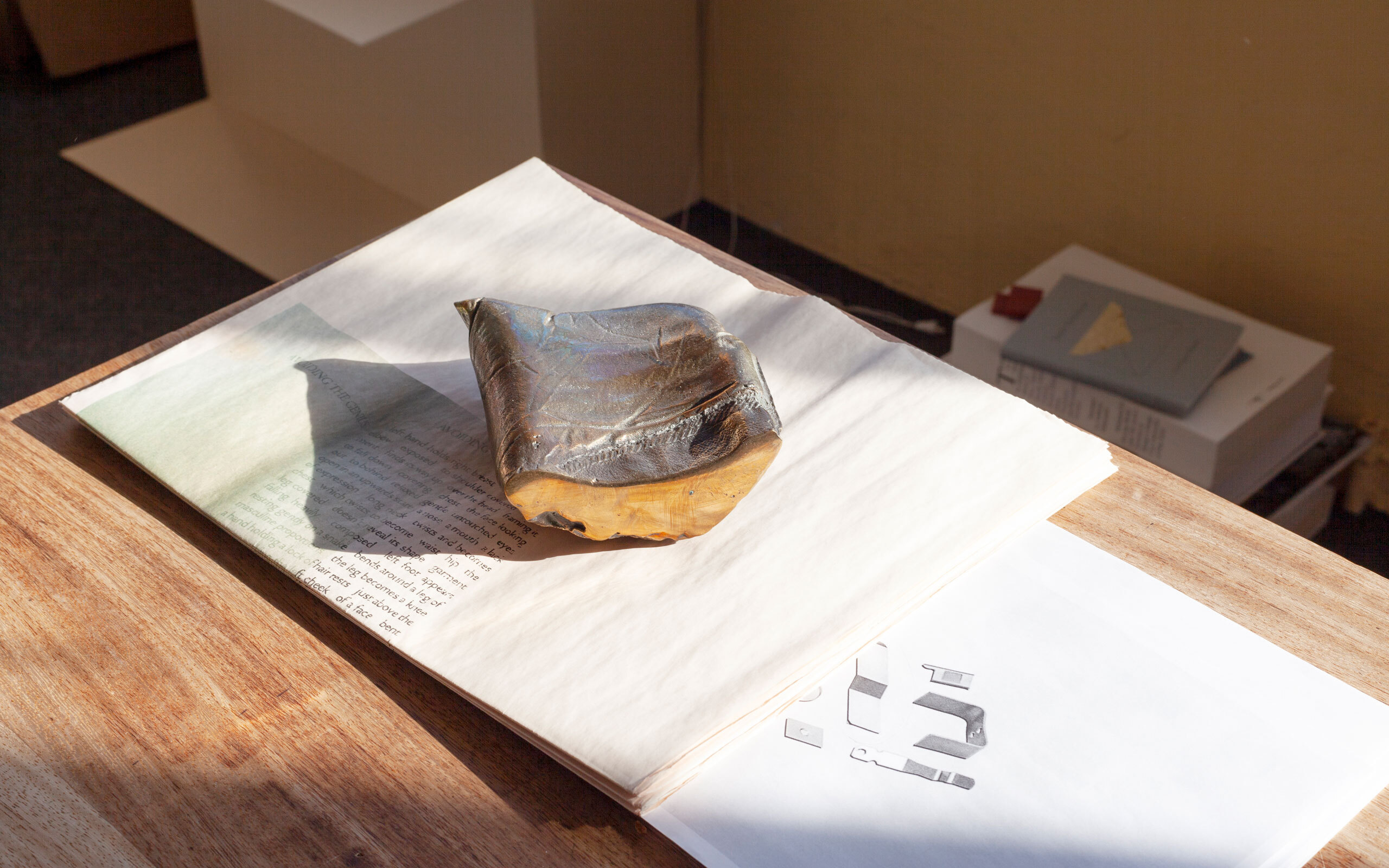
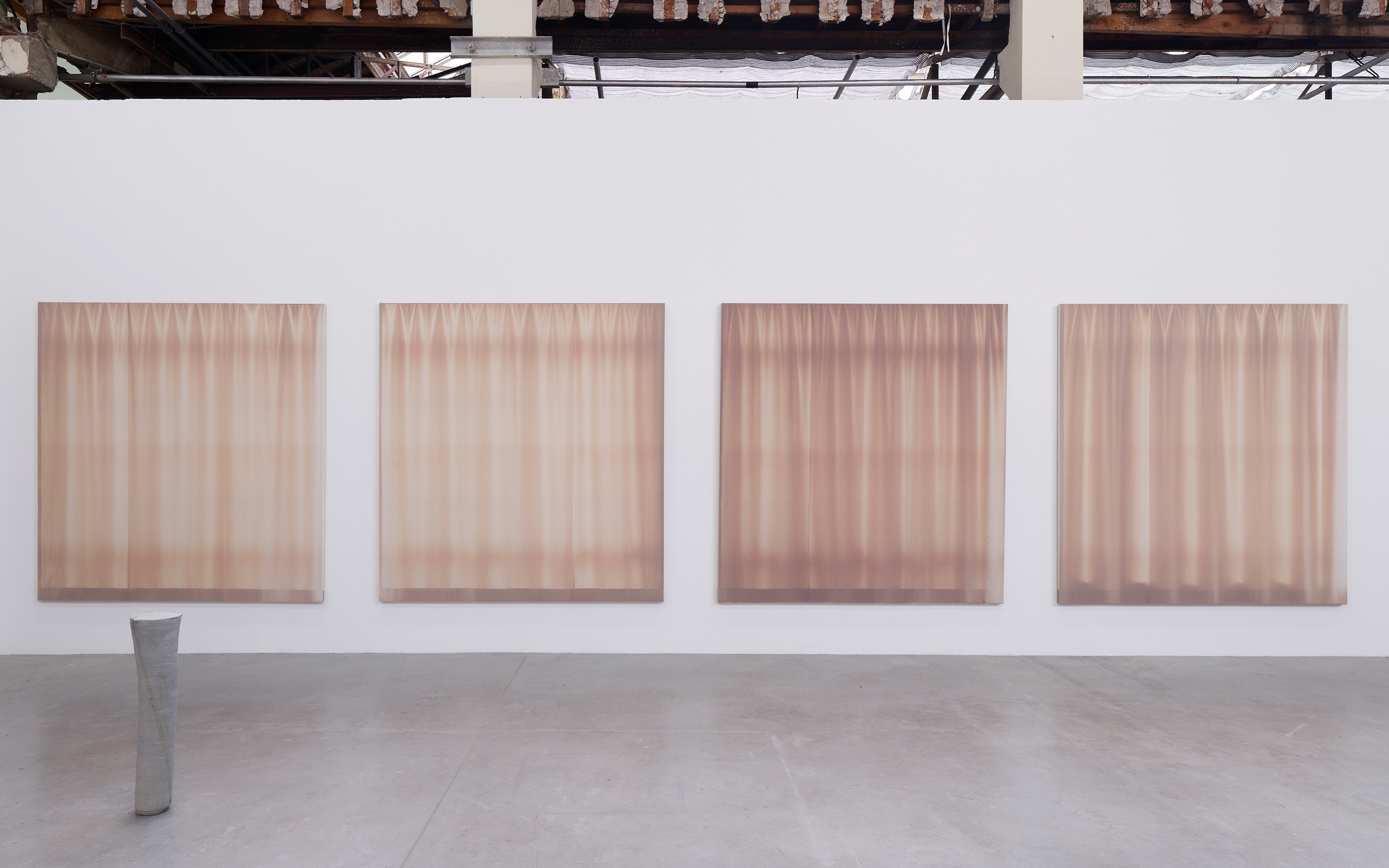
Stills, Installation view ‘Sous le regard de machines pleines d’amour et de grâce’, Palais de Tokyo, Paris, 2017, Photo: Aurélien Mole
The copper you use will inevitably react with the environment. How do you view works that evolve over time?
Most art spaces are indoors and controlled, and you normally don’t want the materials being exposed to weather or change while being exhibited. The times that I made something for an outdoor setting, I felt that it expanded the idea of the artwork not having an endpoint and stretching beyond what I initiate. I did this in a gallery space in Mexico, located on the Yucatan peninsula. It’s a beautiful space that has somehow a familiar scale and a feel of an art space. But then, it doesn’t have a roof. The peninsula has an extreme climate with six months of the dry season and six months of daily rain. It was after the long dry season in early spring that I installed my copper works, where there was only gravel and sand in the space and hardly any vegetation. Six months later, the vegetation had completely taken over. It felt almost solid, the plants almost concealing the sculptures. With their concave shapes, they had collected water and debris and the copper had darkened and partially turned green. This was an important project for me in terms of setting up a premise for the exhibition as a process or mode of rehearsal, where the materials are not static and the sculptures not final, but tested and influenced by their surroundings.
And for your next exhibition at Kunstmuseum St. Gallen in Switzerland, opening in October, you will be displaying both indoor and outdoor?
The exhibition will spread across three spaces inside the museum, overlooking an outdoor space. For now, it is an unused area that feels slightly forgotten, wedged in between the museum and a residential area. In the same way that I am considering the position of the sculptures inside as a way to frame and activate a space, I am interested in installing something that can draw up a field and initiate the use of it. For the outside, I am working on a series of sculptures with the quality of foundations or partitions that I like to think of as a proposal for a future sculpture park.
Jamming on this topic of process and the workings of time: your series Stills (2014-2017) consists of old curtains. How did you make this series?
They are sun-faded curtains from different buildings. Some are from a school here in Copenhagen, where they had been hanging for more than 30 years. Others come from Arcosanti, which is an incredible architectural project by Paolo Soleri outside of Phoenix, Arizona. These curtains had been exposed to the strong desert sun for years. I got them in return for buying new curtains. Like long-exposure photographs, the windows they used to cover had functioned as a lens exposing the fabric to light and causing the colours to fade. Thus, the canvas is an image of its own shape, movement and surroundings.
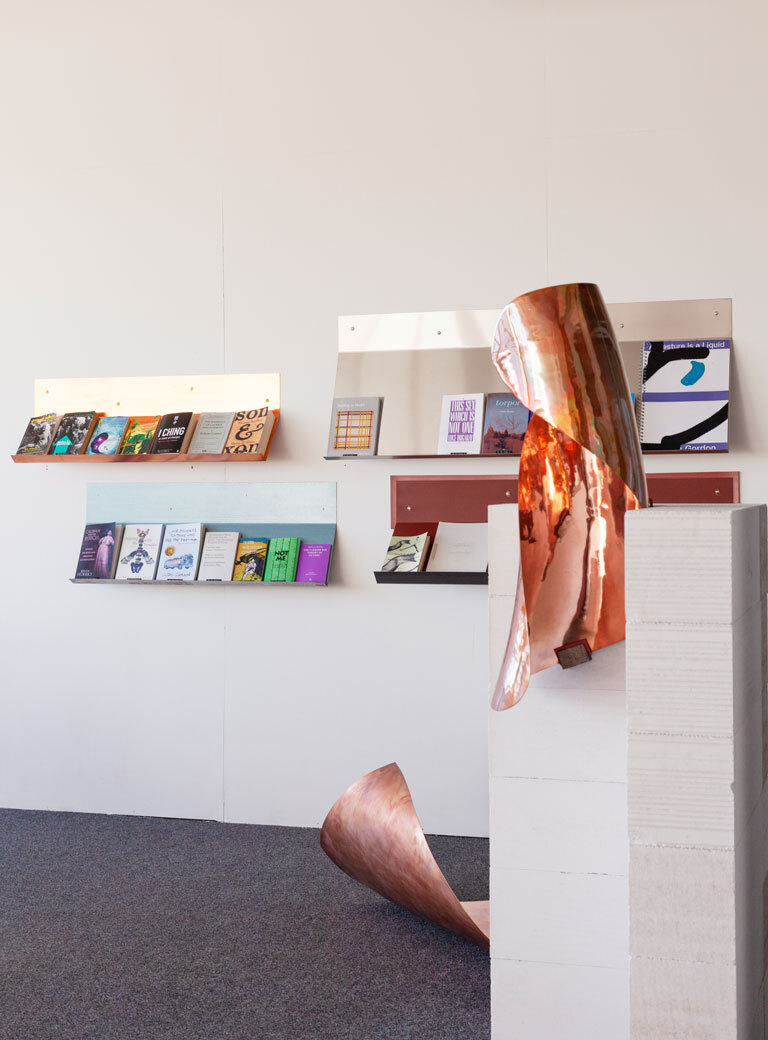
Has there been a time when you have been wary of a space not being suitable for some sculptures?
It’s not necessarily important for me to be able to control what the sculptures do in the space. I like them to inquire instead of performing in a certain way. I’m trying to let the process of making and my thinking extend beyond the work in the studio. It’s often only during the installation of the work, in the exhibition, and in the encounter with the viewer that I get to know them and what they can do.
You have lived in London for quite some time, but now have moved back to Copenhagen where you have your new studio. What is a space for you then?
With a group of other artists, we established a studio collective. I’ve been thinking about this studio as not just hosting my own productions but also conversations. Consequently, I’ve established an artist library in the studio, where I invite artists to select seven titles that have been important in their practice. I make a shelf for each selection and ask the artist to speak about the books, or alternatively I act as a librarian and convey the discussion I have had with the artist. I like to think about each selection of books as a portrait of an artist’s practice. The library is pointing at the idea of an expanded artistic practice that includes thinking and reading, extending towards conversations with others.
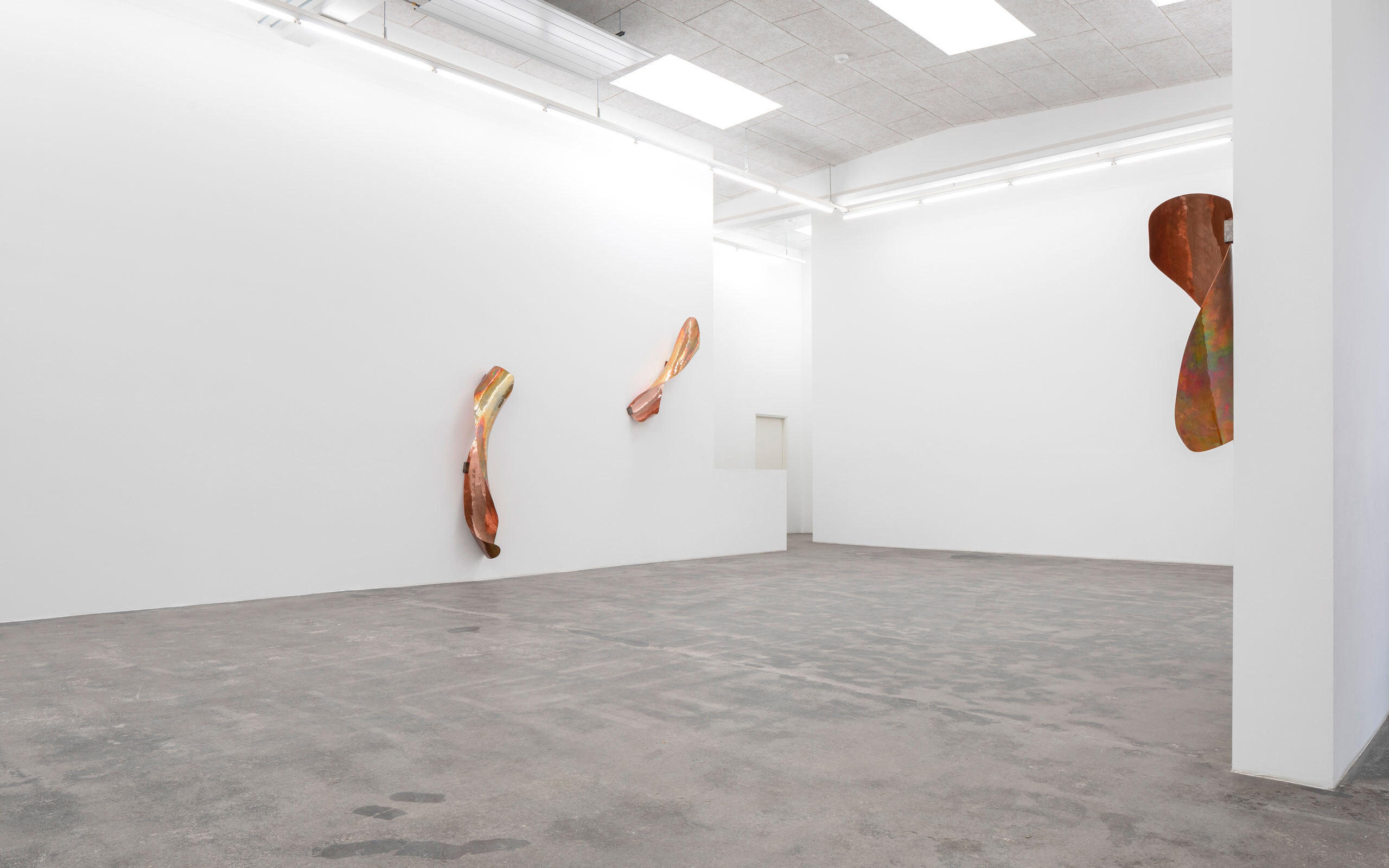
The Thirst, Installation view Nicolai Wallner, Copenhagen, 2019, Photo: Anders Sune Berg
Interview: Rasmus Kyllönen
Photos: Rebecca Krasnik


